Our Favorite Hotels in Sapporo
• Luxury: JR Tower
• 3-star: Mitsui Garden
• Boutique: The Base
• Ryokan: Yuen
• Cheap: Classe Stay
• Hostel: Plat
• For Families: The Base
• For Couples: Chalet Ivy
• Near Sapporo Station: JR Tower
• Shin-Sapporo Station: Emisia
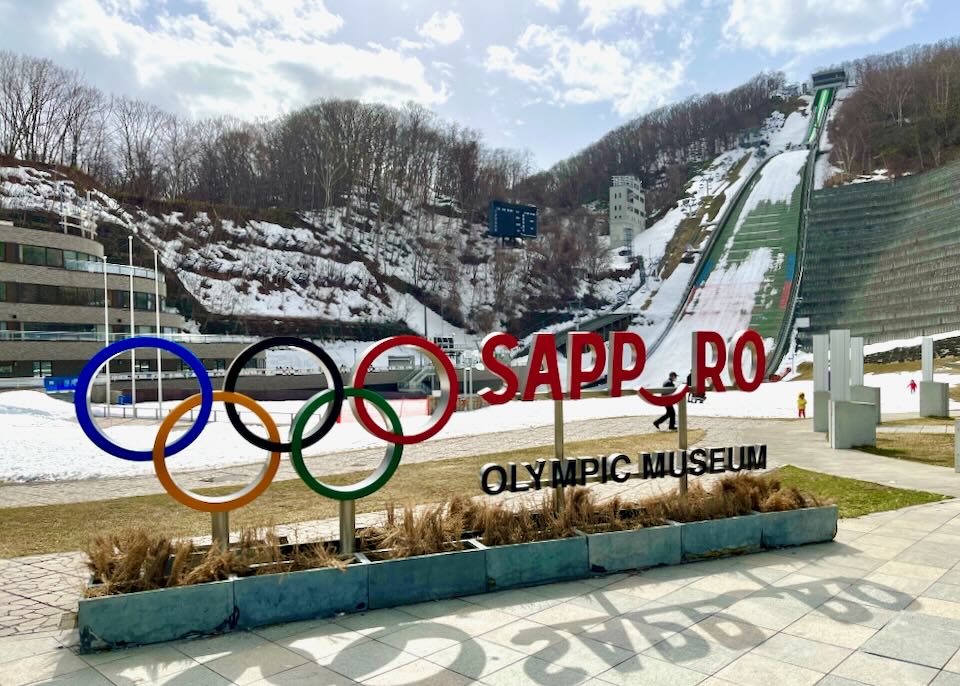
The Okurayama Ski Jump Stadium and the Sapporo Olympics Museum sign.
The Best Areas to Stay in Sapporo
Japan’s northern island is Hokkaido, and Sapporo is its capital. It’s Japan’s fifth largest city and famous for snowy winters, good skiing, the iconic Sapporo Beer brand, and the Snow Festival, which draws millions of visitors annually. Sapporo hosted the 1972 Winter Olympics and is bidding for 2030. Known for its fresh seafood, ramen, curry soup, and lamb barbecue, Sapporo’s food culture is almost as celebrated as its stunning mountain location. Sapporo is relatively young by Japanese standards. Development started in the 1870s, lending to its “Western-style” architecture seen in parts of the city and on display at the Historical Village of Hokkaido.
Sapporo Neighborhoods
Susukino or Sapporo Station, including the Downtown area, makes a good base with hotel options, services, and access to transportation. There’s little to see in these city center neighborhoods, but most of Sapporo’s best attractions are on the outskirts. Though there is little lodging near the sites, Susukino is home to many cheap and mid-range hotels and the hub of Sapporo’s celebrated nightlife.
Heading west, Maruyama Park stands out for hosting the city’s premier shrine, Hokkaido Jingu, and the Sapporo Olympics Museum. Northeast Sapporo (Higashi-Ku) is home to the excellent Sapporo Beer Museum, plus the Isamu Noguchi-designed Moerenuma Park, which has some accommodations for those wanting to get off the beaten path. Further east, Atsubetsu encompasses wooded Nopporo Forest Park, with the Hokkaido Museum and Historical Village of Hokkaido. Rustic South Sapporo (Minami-ku) is a big district worth exploring, including Mount Moiwa’s lofty peak, Jozankei hot springs resort, and Sapporo Ainu Culture Promotion Center. Jozankei is a great hot-springs getaway, but staying there is inconvenient to access the rest of the city.
The green tram on Sapporo’s Streetcar network.
While exploring the (flat) city center on foot is easy, most of Sapporo’s top sights are spread around the outskirts. With some planning, it’s possible to visit everything via trains, subway, buses, and taxis, though many opt for guided tours. Almost all public transportation has labels and announcements in English. The system is relatively straightforward, and it is easy to purchase tickets at station machines or on buses. The subway and tram networks cover most of the urban areas. To get into the hills, you’ll have to transfer to buses. If you have a smartphone, Google Maps is good for trip planning, but another excellent tool is the JapanTravel app.
The Best Places to Stay in Sapporo
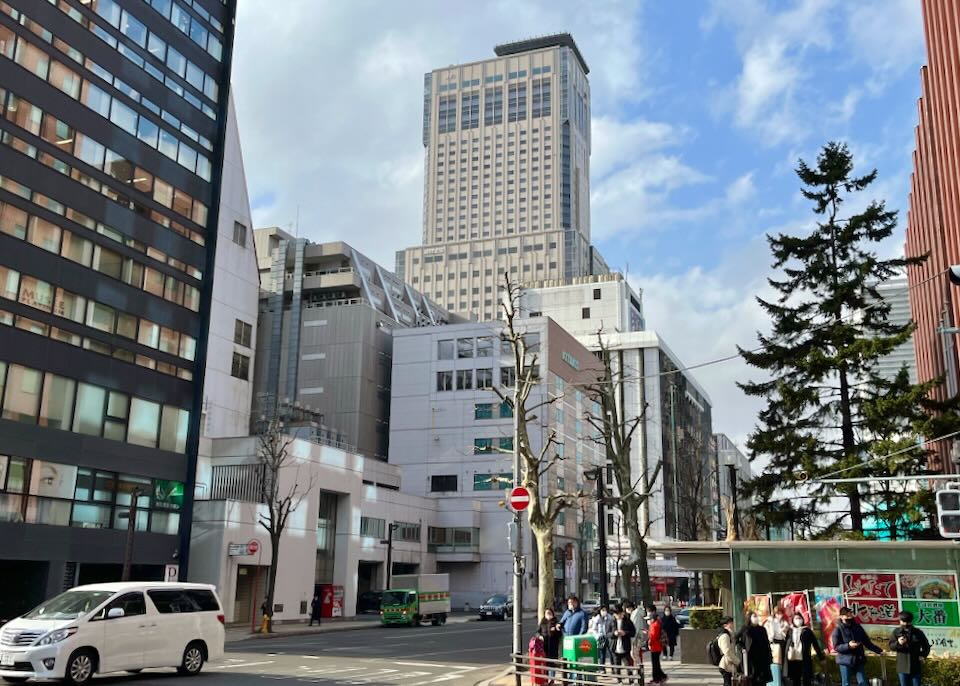
The JR Tower Hotel Nikko Sapporo.
- Best Luxury Hotels in Sapporo
JR Tower • Solaria • Mitsui Garden- Best Boutique Hotels in Sapporo
The Base • 41 Pieces • Alphabed Inn- Best Ryokan in Sapporo
Yuen- Best Cheap & Mid-range Hotels in Sapporo
Classe Stay • Keikyu EX- Best Hostels in Sapporo
Plat • SappoLodgeBest Places in Sapporo for…
- Best Neighborhood to Stay for First Timers/Sightseeing: Sapporo Station & Downtown or Susukino
This is an easy choice since most accommodations fall in these two central neighborhoods. Stay Downtown to be within walking distance of Sapporo Station. Stay in Susukin to be within walking distance of the best restaurants and nightlife, but you’ll need to take the subway or a taxi from Sapporo Station.The Sapporo Clock Tower in Downtown.
Though the best attractions are beyond the city center, there are a few things to see in Downtown and Susukino. There’s JR Tower Observatory T38, the Former Hokkaido Government Office, Sapporo Clock Tower, and the iconic Sapporo TV Tower in Odori Park, home of the Snow Festival in January. The best eating, drinking, shopping, and all the important services are also located here.
- Most Romantic Neighborhoods: Downtown, Maruyama Park, Jozankei hot springs
Sapporo isn’t a wildly romantic city. However, in the winter, plenty of couples enjoy weekend getaways for the ski slopes, mist mountain viewpoints, Snow Festival, and cozy fireplace nooks in ski lodges and boutique hotels. To access the best activities, Downtown, near Sapporo Station, is still the best place to stay. Onsen Ryokan Yuen is the most romantic hotel in the area.Maruyama Park is the most romantic location in the city. Highlights include tranquil woodlands, blossoms in the spring, Hokkaido’s main Shinto shrine, and breathtaking views down the Okurayama Ski Jump from the Observation Lounge. It’s best to stay Downtown as there are no good hotels nearby.
For a tranquil escape, about an hour from Sapporo Station by bus, the Jozankei Hot Springs is an atmospheric mountain spot with private thermal baths. Most public hot spring baths segregate by sex, and if you have tattoos, you’re usually not allowed. For a splurge, try the Chalet Ivy Jozankei or the Shogetsu Grand Hotel. Jozankei Manseikaku Hotel Milione is generally cheaper.
- Best Neighborhood for Nightlife: Susukino
With the concentration of hotels and bars in Susukino, it’s the best area for nightlife. Though old-school hostess clubs are part of the scene, there are plenty of regular bars, restaurants, and nightclubs.The “Noria” Ferris Wheel, on top of the Norubesa commercial building.
Covered Tanukikoji Shopping Street lights up in the evening, with shops, bars, and cafes open till 11 pm or later. In the summer, several beer gardens open in Odori Park. The multicolored Noria Ferris Wheel, open late, especially on Friday and Saturday nights, provides panoramic city views.
The Bar Nano Femto in the Miyako Building and The Bar Nano Gould in the J-Box Building are great for cocktails. Sound Lab Mole is the place for live music. Though there are hundreds of bars in Susukino, Bar Orb, Flair Bar Es, and Bar Knight are also recommended.
- Best Neighborhood for Food and Restaurants: Susukino
Thanks to its rich agricultural hinterland, Sapporo is a major foodie destination and is famous for ramen and lamb jingisukan BBQ. Many top spots in Susukino – often tiny Japanese-style eateries with counter service – attract long lines at peak times, but it’s usually worth the wait. They usually don’t take reservations.Butter Corn Ramen, a Sapporo specialty served in Ramen Alley.
Sapporo is considered one of the country’s premier makers of the celebrated Japanese noodle dish, ramen. Especially popular with tourists is “batā-kōn” ramen, served with a chunk of butter that slowly melts into the soup and corn. Rāmen Yoko-chō (“Ramen Alley”) is a narrow passage just off the main drag in Susukino crammed with tiny ramen joints.
The other primary culinary specialty is “lamb jingisukan BBQ,” named after Genghis Khan. Lamb strips and veggies are cooked on a dome-shaped grill and then dipped in a salty-sweet sauce. One of the best places to try it is the original Daruma Main Shop in Susukino, which has 15 seats. The Daruma 5.5 Branch opposite is a bit bigger. Another popular dish is “soup curry,” combining Japan’s ever-expanding passion for curry sauce with chicken soup. It’s said to have emerged at a local Sri Lankan restaurant in the 1970s. Garaku Soup Curry is an excellent place to sample it, but it’s available at numerous places.
Seafood, in general, is excellent in Sapporo, with crab and salmon at the top of the list. For seafood tempura, try the venerable Ebiten Bunten; for fresh sea urchin (“uni”), visit Umi Hachikyo. Hokkaido is famed for its milk. Try ice cream made from Hokkaido milk and drizzled with brandy, whiskey, or other spirits at the whimsical Hokkaidō Milk Mura on the 6th floor of the New Hokusai Building.
Milk Mura ice cream bar in Susukino.
Susukino also offers plenty of Michelin-starred options that require reservations. Hanakoji Sawada serves top-notch kaiseki menus by executive Chef Tomoya Kago. Tempura Araki, named after Chef Yoshiyuki Araki, has a legendary tempura omakase. Shuboushinsen offers exquisite contemporary Japanese food. Katsukani no Hanasakiat has fresh “live” crab.
- Best Neighborhood for Shopping: Susukino
Covered Tanukikoji Shopping Street in Susukino.
Sapporo’s premier covered shopping arcade is Tanukikoji Shopping Street. It’s a 7-block strip (just over half a mile or 900m) of stores, bars, and cafes in Susukino.
There are also the Sapporo PARCO, Maru Imai, Mitsukoshi department stores, the MEGA Don Quijote store (of Japan’s celebrated discount store chain), a branch of Bookoff (discount books, DVDs and manga), and numerous local fashion boutiques. Around Sapporo Station, BIC CAMERA sells cheap electronics.
- Best Neighborhood to get off the Beaten Path: Atsubetsu
The Hotel Emisia Sapporo at Shin-Sapporo Station is a great place to stay to get off the beaten path. You won’t see many foreign tourists in the primarily residential areas around the hotel. It’s close to Nopporo Forest Park and the hiking trails. During the week, you’ll have much of this wild reserve to yourself. Even major sights like the Historical Village of Hokkaidoo open-air museum and nearby Hokkaido Museum (history) are rarely busy mid-week.Local favorite Cheer Café offers coffee and desserts. There are many restaurants inside Shin-Sapporo Station, with “Pirozangi” at the top. They specialize in fried chicken (or “zangi”). During the COVID pandemic, it grew a cult following by selling fried chicken from a food truck (aka “Pirozangi Car”). Karaoke Piros, just outside Shin-Sapporo Station, offers video karaoke and a restaurant that also serves the famous chicken
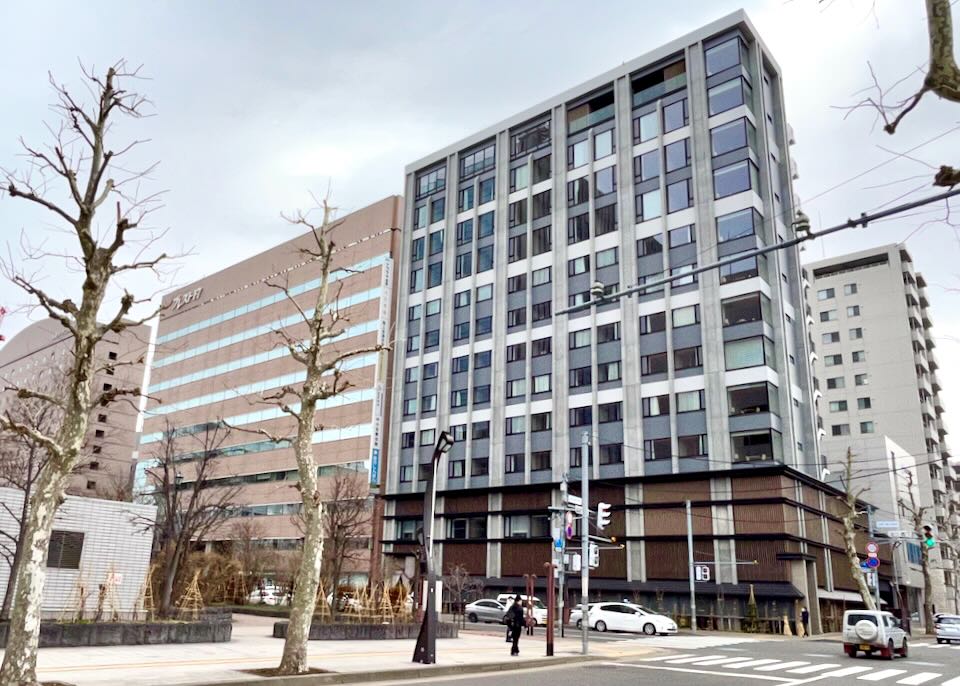
Onsen Ryokan Yuen Sapporo
The 6 Best Neighborhoods in Sapporo for Tourists
1. Sapporo Station & Downtown
A display at Hokkaido University Museum.
Sapporo’s city center is relatively compact. The main train station is at the northern end of the central business district. Staying here makes an excellent base for easy transportation, and there’s a decent array of shops and restaurants around town. Inside the station complex is a maze of malls and eateries. Sapporo isn’t a high-rise city by Japanese standards, but its highest skyscraper is JR Tower (568ft/173m) right above the station, which opened in 2003. The best views of the city and mountains are from JR Tower Observatory T38, on the 38th floor, which is especially beautiful at night.
The Sapporo TV Tower in Odori Park with an observation deck.
The main business district lies just south of the station. There are few sights there, but a couple are worth checking out. The wooden Sapporo Clock Tower is another “Western-style” building. It was completed around 1878 as part of the Agricultural College and is now a museum. The iconic 1950s Sapporo TV Tower has excellent views from the small observation deck on the third floor. Extending west, about a mile from the tower, Odori Park marks the boundary with Susukino. It’s a hub for the Snow Festival in January and German-style beer gardens in summer.
Fossils at the Hokkaido University Museum.
Hokkaido University Museum, north of the station, has a floor dedicated to archeological remains, minerals, dinosaur fossils, and more. Hokkaido Museum of Modern Art is mostly Japanese artists but also has work by Jules Pascin, the Bulgarian painter. Near the museum is the Tudor-style Hokkaido Governor’s Official Residence, built in 1936.
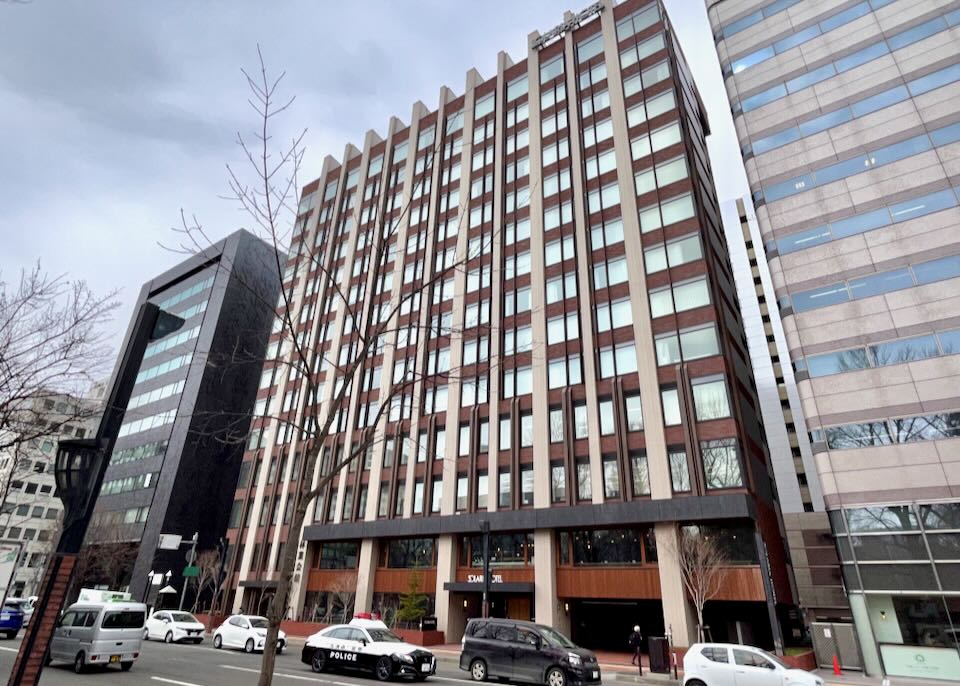
The Solaria Nishitetsu Hotel Sapporo.
Staying here is very convenient, with some of the best hotels in the city.
- The Best Hotels in Sapporo Station & Downtown:
JR Tower Hotel phone: +81 11 251 2222
Solaria Hotel phone: +81 11 208 5555
Hotel Mets Hotel phone: +81 11 729 0011
Mitsui Garden Hotel phone: +81 11 218 2231
Sapporo Grand Hotel phone: +81 11 261 3311- Best Ryokan:
Yuen Hotel phone: +81 11 271 1126- Best Cheap/Midrange Hotels:
Keikyu EX Hotel phone: +81 11 737 3910
Cross Hotel phone: +81 11 272 0010- Best Hostel:
Ten To Ten Hotel phone: +81 11 205 07872. Susukino
Susukino.
Susukino is Sapporo’s neon-lit party zone, famous for its nightlife. It’s a good place to stay just south of the business district. Transport links to the rest of the city are excellent, and you’ll be within walking distance of the best restaurants, clubs, and bars.
Ramen Alley in Susukino.
“Ramen Alley” is here, as well as Tanukikoji Shopping Street. The covered mall of shops and restaurants runs east to west for about half a mile and comes alive at night, like most of the district. Besides eating, drinking, and shopping, there’s not much else to see. Though, riding the “Noria” Ferris Wheel atop the Norubesa commercial building is especially fun at night.
To the south is Nakajima Park. The pleasant green space has the Western-style event venue, Hōheikan, and the more exotic Gokoku Shrine, dedicated to those who “died for the nation” and located here since the 1930s.
Susukino is a fun place to stay in Sapporo. It’s not as convenient as the main train station, but it has many cheap and mid-range hotel options and some excellent boutiques that offer larger family rooms.
- The Best Hotels in Susukino:
The Base Hotel phone: +81 11 215 0740
Riverside Hotel phone: +81 11 206 6817
41 Pieces Hotel phone: +81 11 252 7042
Alphabed Inn Hotel phone: +81 800 111 3089- Best Cheap/Midrange Hotels:
OCHO Hotel phone: +81 11 211 0338
Classe Stay Hotel phone: +81 11 596 8255
Shabby House Hotel phone: +81 90 2816 6912
Dormy Inn Hotel phone: +81 11 232 0011- Best Hostels:
Guest House Yasube Hotel phone: +81 11 213 1305
SappoLodge Hotel phone: +81 11 211 4314
Plat Hotel phone: +81 11 596 97923. Maruyama Park
The Hokkaido Jingu (“Hokkaido Shrine”), the city’s primary Shinto temple, in Maruyama Park.
On the slopes of the mountains west of the city center, Maruyama Park is the focal point for several major attractions. A short walk from the Maruyama Koen subway station is the city’s primary Shinto temple, Hokkaido Jingu (Hokkaido Shrine). This location dates back to the earliest beginnings of the city in 1871, with the current complex rebuilt after a fire in 1978. On the grounds is the Jingu Tea Room, which sells baked goods, tea, and coffee and has outdoor seating. It’s known for delicious soft-serve ice cream, freshly baked fukure mochi, and crunchy “Fuku-Kashiwa” cookies shaped like an oak leaf.
The view from the top of the Okurayama Ski Jump Stadium.
Further up the slopes is the Okurayama Ski Jump Stadium, which contains the ski jump used in the 1972 Winter Olympics and the Sapporo Olympics Museum. The chairlift ride climbs to the top of the ski jump and offers stellar views across Maruyama and the rest of the city. Buses run directly to Okurayama from the Maruyama Koen subway station. Along the route is the family-friendly Maruyama Zoo.
There are no good hotels here. If you want to stay in the area, consider an apartment rental for a more local experience, or take the subway here from Downtown or Susukino. They are both only a few subway stops away.
4. Northeast Sapporo (Higashi-Ku)
The Sapporo Beer Museum.
Northeast Sapporo contains several key attractions, though only a few places to stay. Closest to the city center is the Sapporo Beer Museum, the city’s premier memorial to the world-famous beer brand. The red brick brewery that opened in 1905 houses the museum. There’s a free tour, but most labels are in Japanese. Guided tours cost extra. You can taste the famous brews in the Star Hall for about US$1 a glass or relax in one of the nearby Sapporo beer gardens during summer. Closer to the city center is the Sapporo Factory, the original brewery, now a shopping mall and multiplex theater.
With more time, check out Moerenuma Park, designed by American-Japanese artist Isamu Noguchi in 2005. It includes a glass pyramid dubbed “Hidamari” with a restaurant and museum, about 3,000 cherry trees, the Aqua Plaza and Sea Fountain, and various other monuments. Nearby is Sapporo Satoland, an amusement park and Sapporo Snow Festival venue. It’s a hassle to get to on public transportation with transfers from subway to bus. Taxi is a better option and takes about about 30-40 minutes.
There are few accommodations here, but it is quieter than staying in the city center. Sosei is a good hotel opposite the Sapporo Factory (not far from Sapporo Station), while a little further out is Pirka, a quiet, friendly hostel with dorms.
5. Atsubetsu (East Sapporo)
One of the many buildings at the outdoor Historical Village of Hokkaido.
Eastern Sapporo is mostly in residential Atsubetsu-ku, with several key attractions in the foothills on its far eastern border. Protected in the Nopporo Forest Park is a wooded reserve with hiking trails.
On the park’s outskirts is the Historical Village of Hokkaido, a fascinating open-air museum that preserves over 50 relocated buildings raised during the island’s frontier years from the 1870s to the 1920s. It takes half a day to see all of it. Highlights include the 1908 Sapporo Station building (now the main entrance) and a replica of the Western-style Hokkaido Development Commission office completed in 1873. You can reach the village by taking JR Bus 22 from Shin-Sapporo station.
The Mammoth on display at the Hokkaido Museum.
The bus also stops at the Hokkaido Museum, though it’s possible to walk between the two sites through the woods. The museum chronicles Hokkaido from prehistory to modern times, with some labels in English. There’s lots to see, and a great place to learn about Hokkaido’s indigenous Ainu culture.
If you get this far, it’s worth strolling into the park to see the soaring 328-foot (100m) Hokkaido Centennial Memorial Tower. It’s currently being restored. Also, the nearby “Hand of the Earth” monument. You can continue another 1.2 miles (2km) to the Nopporo Forest Park Visitor’s Center for more park and trail information.
The comfortable and modern Hotel Emisia Sapporo at Shin-Sapporo Station is perfect for getting off the beaten path and getting closer to Nopporo Forest Park.
6. South Sapporo (Minami-ku)
View from the top Mount Moiwa from the Ropeway (cable car).
South and southwest of the city center along the Toyohira River valley is the mountainous district of South Sapporo. There’s plenty to see down here, but you’ll need to rely on buses, taxis, or your own transport to get around. Highlights include Mount Moiwa, with a small ski resort and an observation deck accessed via the Moiwa Ropeway (cable car). If you only have time for one of Sapporo’s viewpoints, this is the best choice, assuming it’s sunny. The views are sensational, not just of the city but also of the larger mountains to the west. Night visits are spectacular but often busy. A free shuttle bus runs between Ropeway Iriguchi tram station and the cable car base station.
Heading south along the Toyohira River, Makomanai Park contains the educational Sapporo Salmon Museum. The indoor aquarium and viewing area show salmon spawning in the river during fall. The park was also home to the 1972 Winter Olympic Games.
One of many outdoor sculptures at Sapporo Art Park.
From here, several buses connect Makomanai Station with Sapporo Art Park (including bus #106). The park contains the Sapporo Art Museum with rotating exhibits and a fantastic outdoor sculpture park. More than 70 contemporary sculptures sit among the wooded slopes, but it’s closed in winter.
Bus #106 continues up to the Hill of the Buddha. Japanese architect Tadao Ando designed this small shrine. It features a 44-foot-tall statue of Buddha sitting in a manufactured hill with his head sticking out of the top. There’s also an Ando-designed reproduction of England’s Stonehenge and a replica Moai statues from Easter Island (the big heads).
Heading west along the Toyohira River, the Sapporo Ainu Culture Promotion Center is an excellent introduction to the island’s indigenous culture. The Ainu people occupied Hokkaido thousands of years before the Japanese.
The Jozankei hot springs resort features numerous hotels with hot thermal baths and spas. Unless you plan on staying at Jozankei hot springs, it’s best to day-trip to South Sapporo’s attractions.
Sapporo With More Time
We’ve covered our favorite neighborhoods to visit and stay in more detail above, but with more time, these attractions are also worth checking out.
Families may want to visit Shiroi Koibito Park in West Sapporo. It’s a “chocolate entertainment park” operated by the manufacturer of Shiroi Koibito, a white-chocolate-filled cookie that’s one of Japan’s popular sweets. The Western-style grounds have a British Tudor theme. See them make the cookies and Baumkuchen cake, make your own cookies, or tour Gulliver Town POKKE, a miniature town where kids play dress up. There’s also a miniature railway, a company museum, and the Mechanical Clock Tower, which presents a 10-minute “chocolate parade” with automated animals every hour. The park is a short walk from Miyanosawa subway station.
Watch the Consadole Sapporo, a J1 League soccer team, at the city’s premier sports stadium, Sapporo Dome in Toyohira. The Hokkaido Nippon-Ham Fighters baseball team now plays much further out at Es Con Field Hokkaido.
Sapporo Travel Tips
- New Chitose Airport serves Sapporo, though it’s 28 miles (45km) southeast of the city center. Numerous flights connect Chitose with Tokyo and other cities in Japan and Asia. Hawaiian Airlines flies directly from Honolulu. Otherwise, you’ll likely have to fly to Tokyo internationally. A frequent express train zips to the downtown Sapporo Station in under 40 minutes. It’s faster and much cheaper than taxis. From Sapporo Station, you can take a taxi or transfer to local public transportation. If you need to stay at the airport, the best hotels are the conveniently located Air Terminal Hotel and the more expensive Portom International Hokkaido, right inside the airport. Cheaper accommodations are in nearby Chitose, but it’s not worth staying here unless your flight is exceptionally early and you need to save money.
- The high-speed Hokkaido Shinkansen train line terminates at Hakodate. From Shin-Hakodate station, you must change to a regular train, making the whole journey around 8 hours.
- Renting a car can be a hassle in Japan because you need an International Driver’s License. Assuming you can get one, renting a car for a couple of days in Sapporo is not a bad idea to see the sights on the outskirts. You’ll spend more money, but it will be faster and more convenient than public transportation, given how spread out everything is. Unless it’s rush hour, Sapporo’s roads are relatively uncongested for a major city.
- Cycling is a good way to zip around central Sapporo, but the primary attractions lie in the steep hills around the outskirts. Porocle offers e-bikes at around 50 docking stations throughout the city. One-day passes start at ¥1,430. Children must wear helmets.
- You’ll find a helpful Hokkaido–Sapporo Tourist Information Center (with English speakers) at Sapporo Station (near the West Concourse, North Exit), open daily from 8.30 am to 8 pm. The smaller Odori Information Station is in the basement concourse of Odori Station. Information points are in Odori Park and at Sapporo International Communication Plaza across from the Sapporo Clock Tower. For general tourist information and help in English, call 011-222-4894. For more information see Sapporo Travel.
- Try to learn a few words and numbers in Japanese. Don’t assume anyone else will understand you, even though most hotels, some shops, and restaurants will have English speakers. Sapporo has become an international tourist hub in recent years, with English as the second language, but most locals only speak Japanese. The staff at the main JR Ticket Office at Sapporo Station can usually communicate in basic English, and most signage is translated into English.
- Free Wi-Fi is available in several train and subway stations, Odori Park, Jozankei hot springs, and Maruyama Zoo, thanks to “Sapporo City Wi-Fi.” Register to use the service for up to 30 minutes each time you connect. You can reconnect an unlimited number of times.
Read More

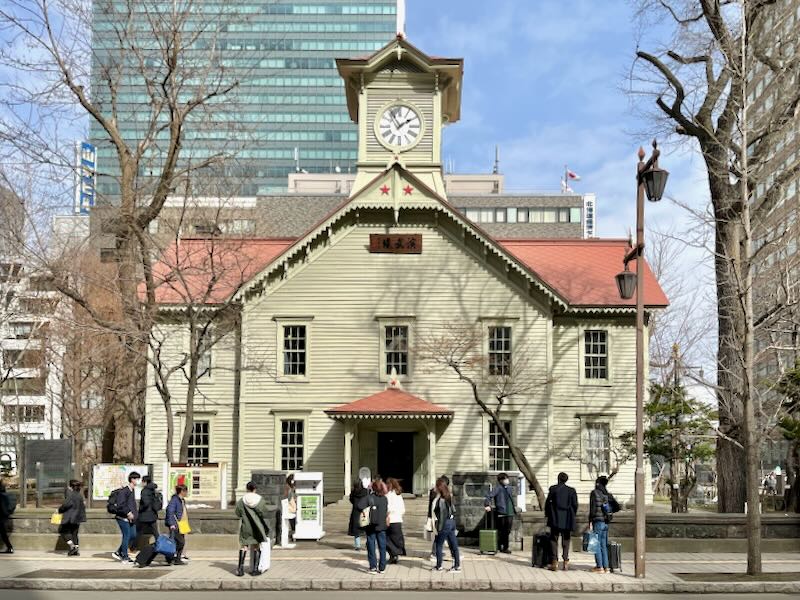
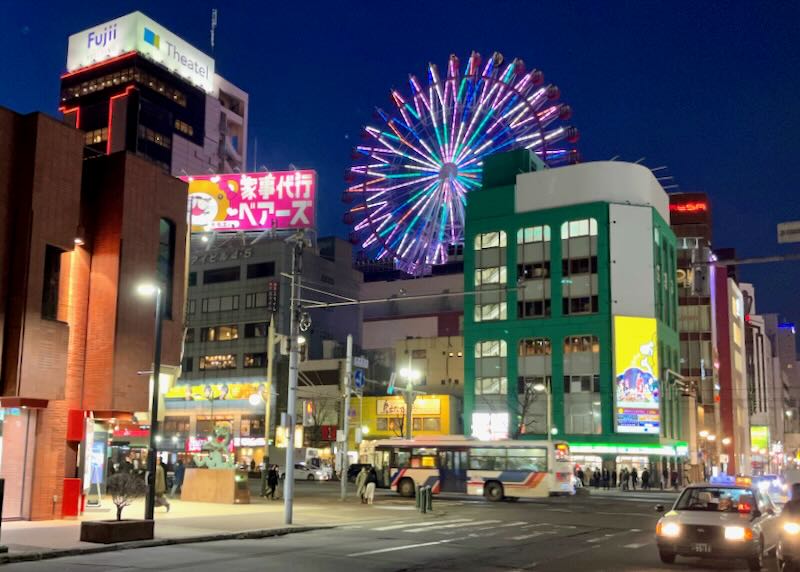
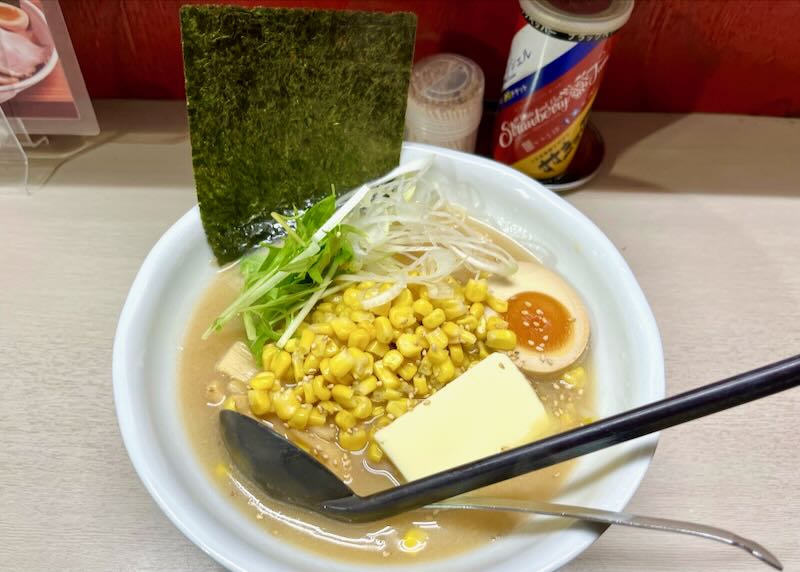
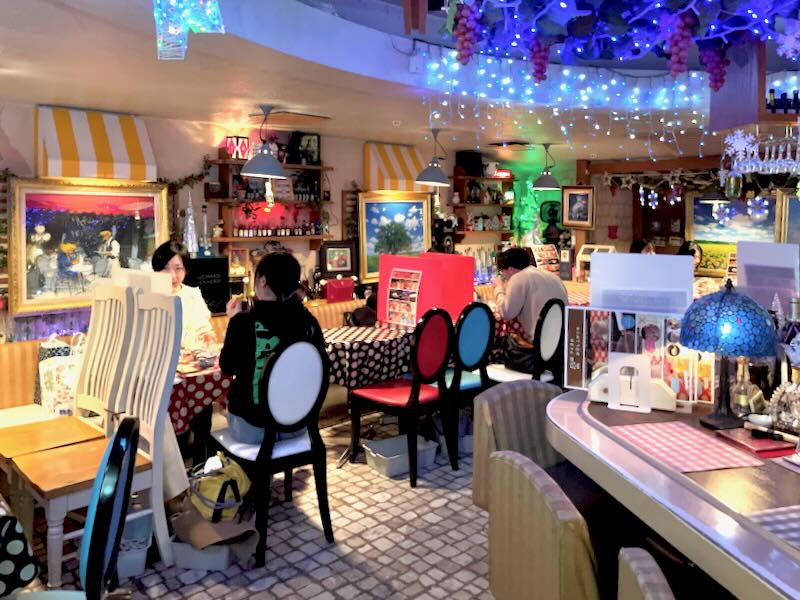
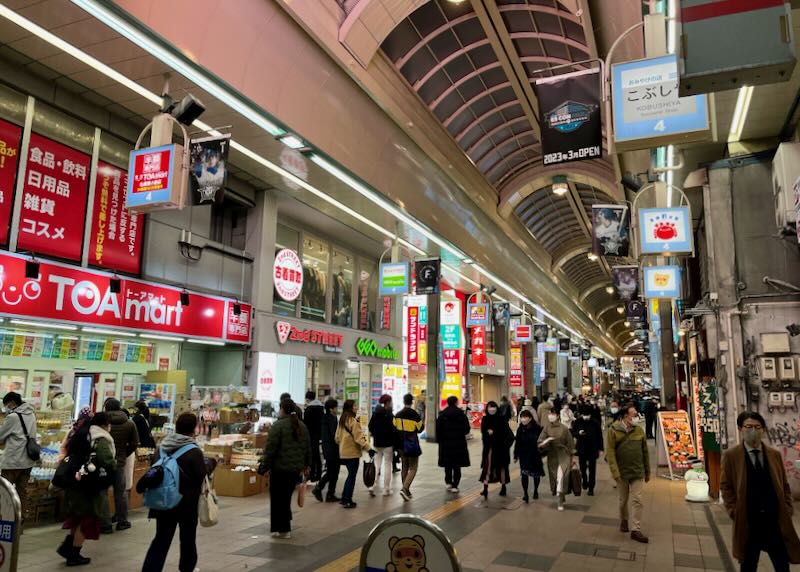
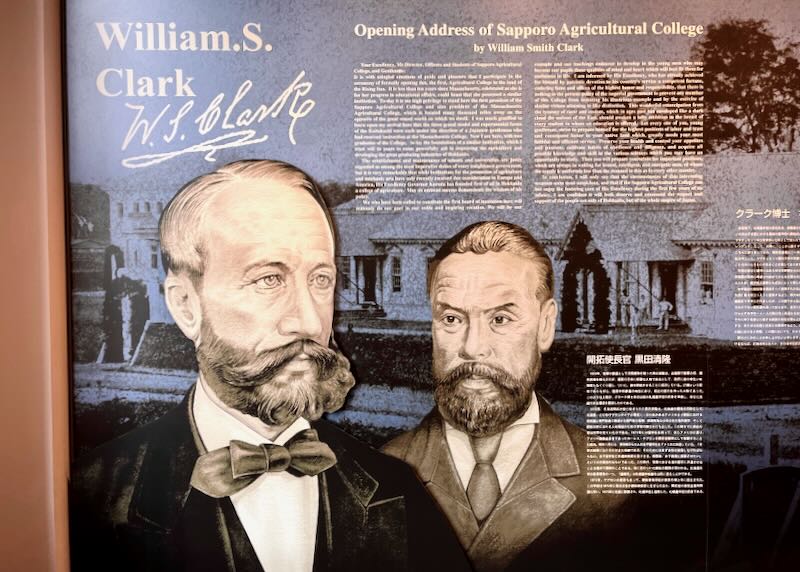
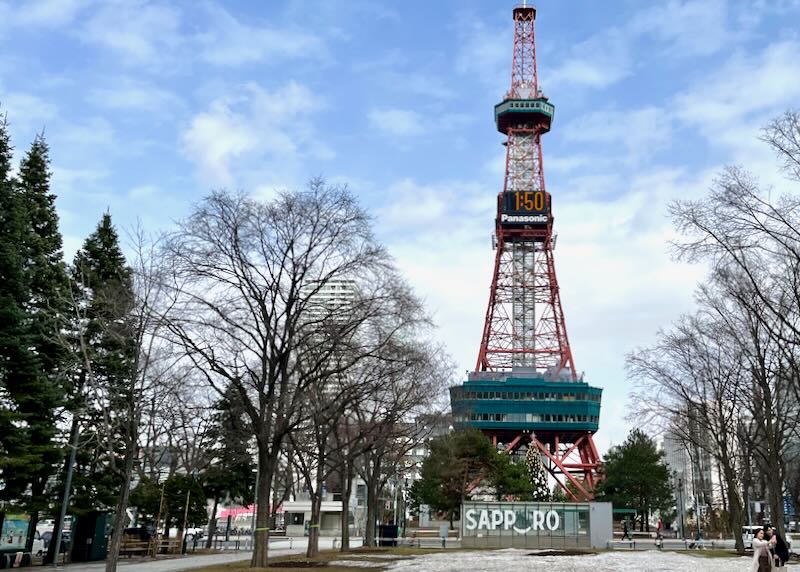
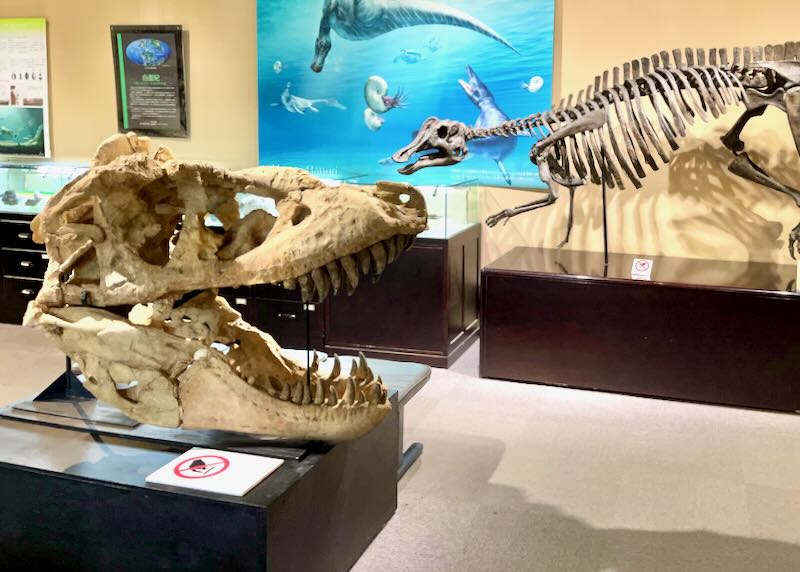
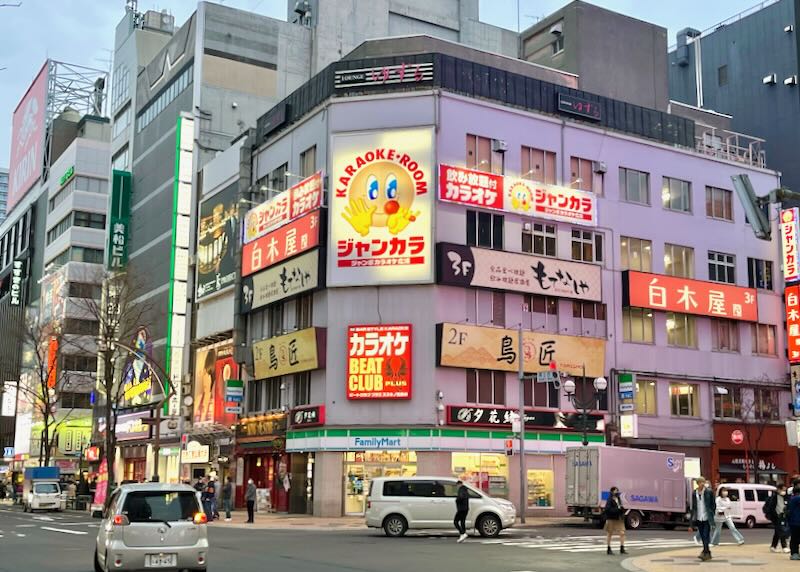
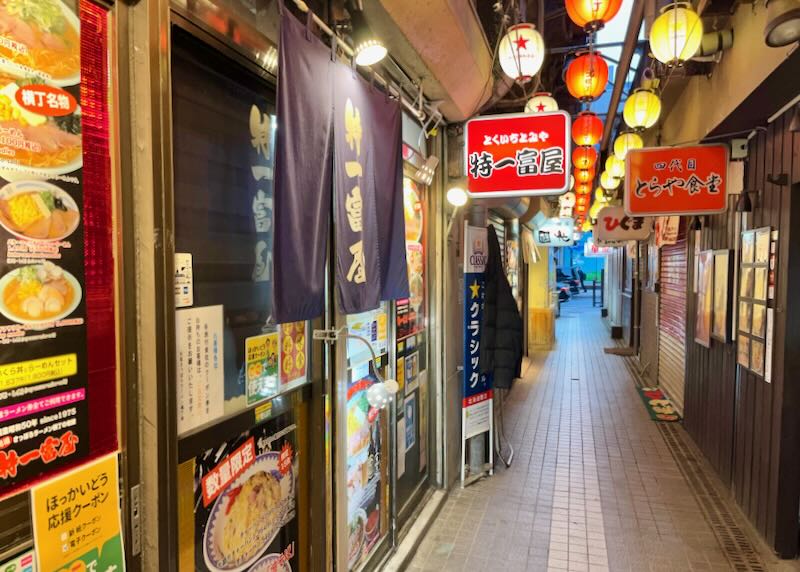
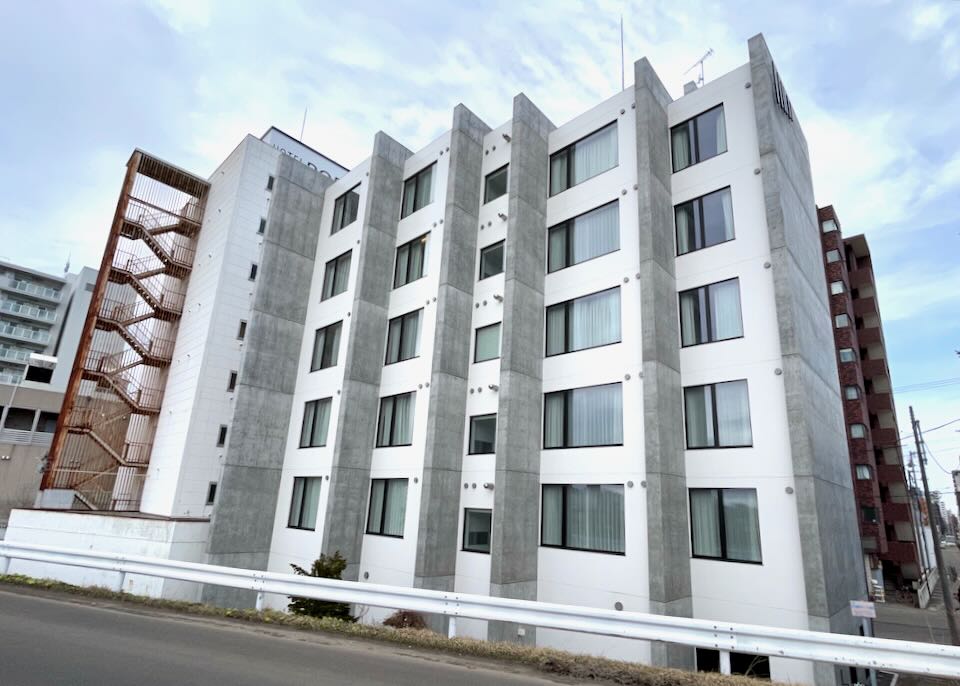
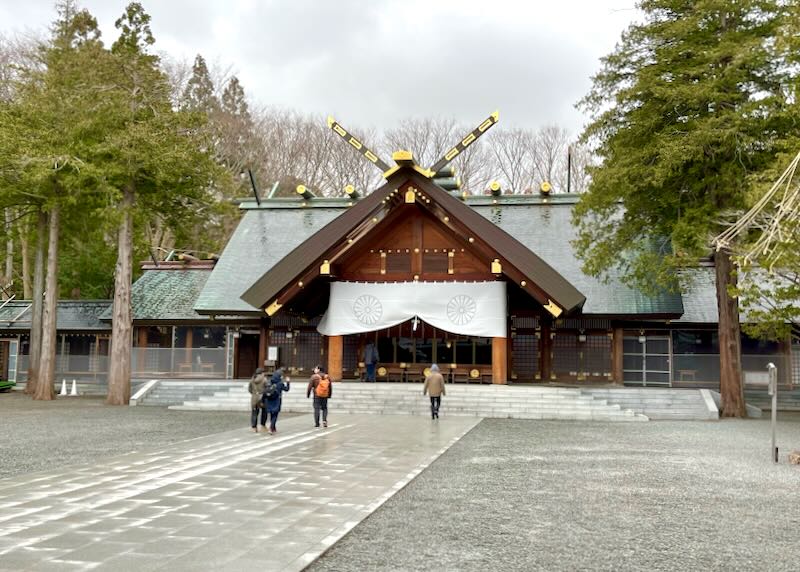
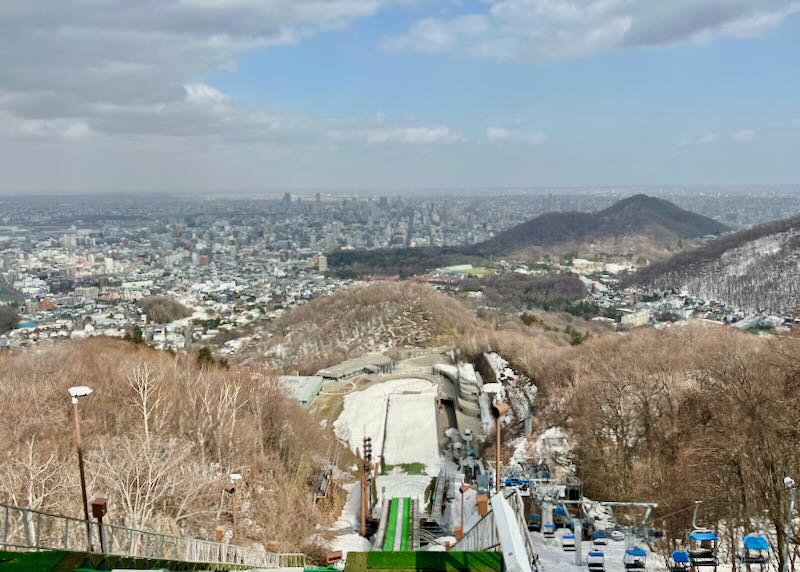
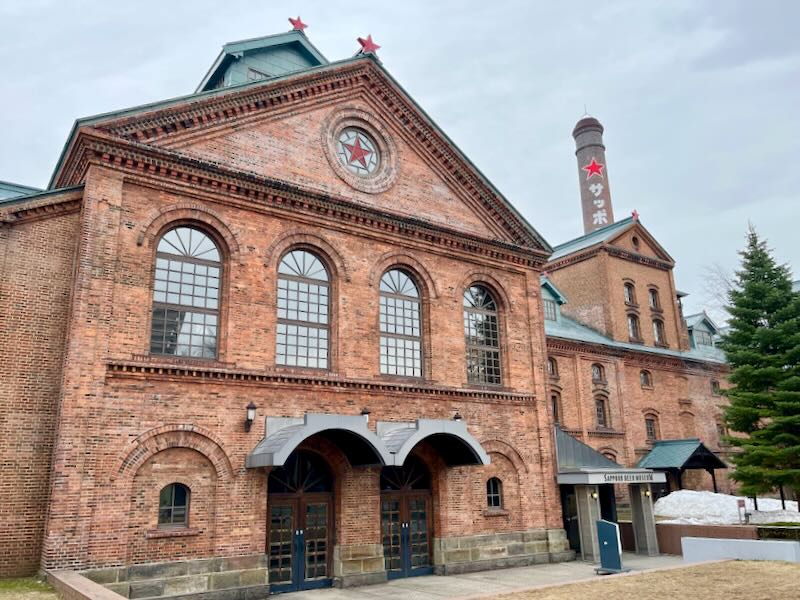
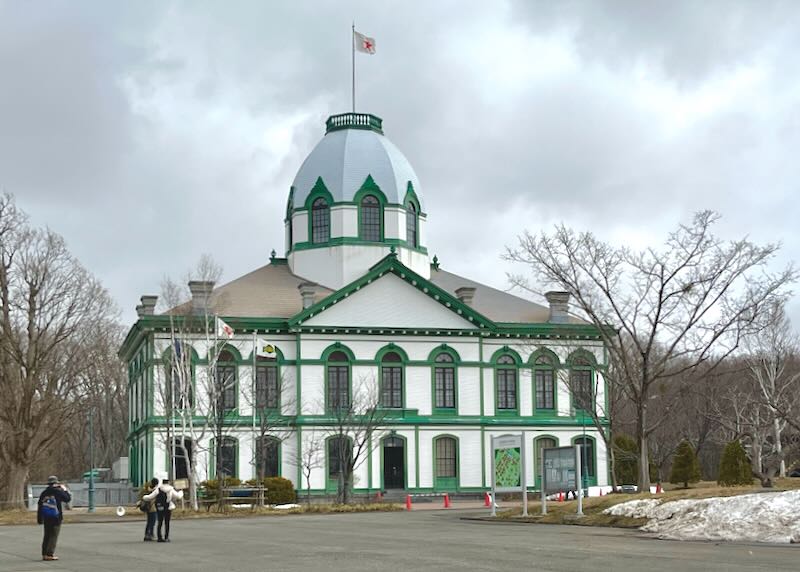
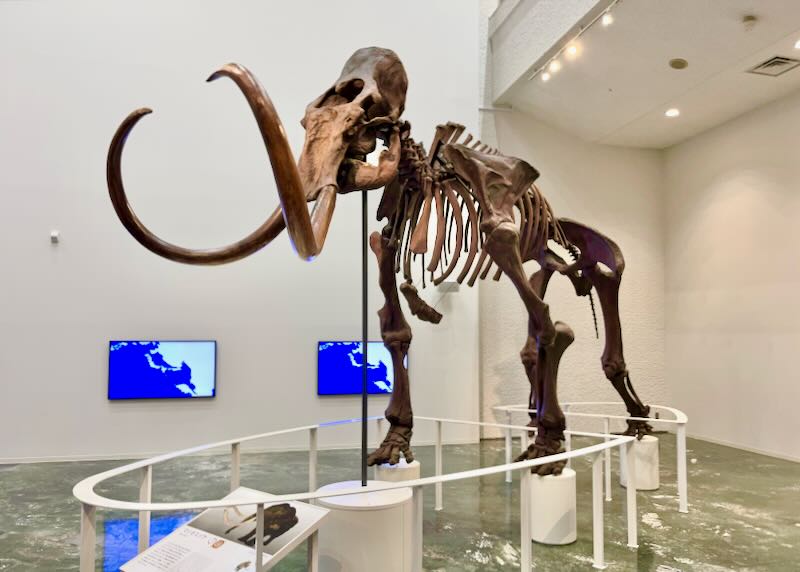
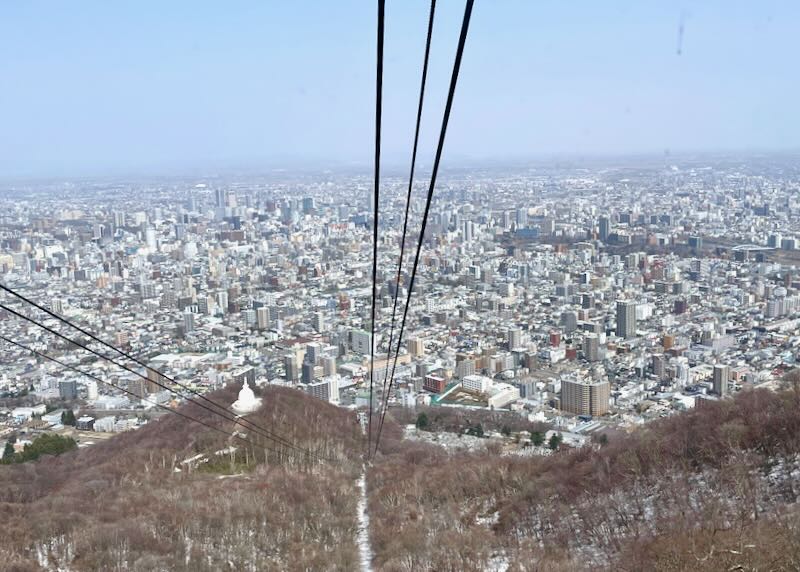
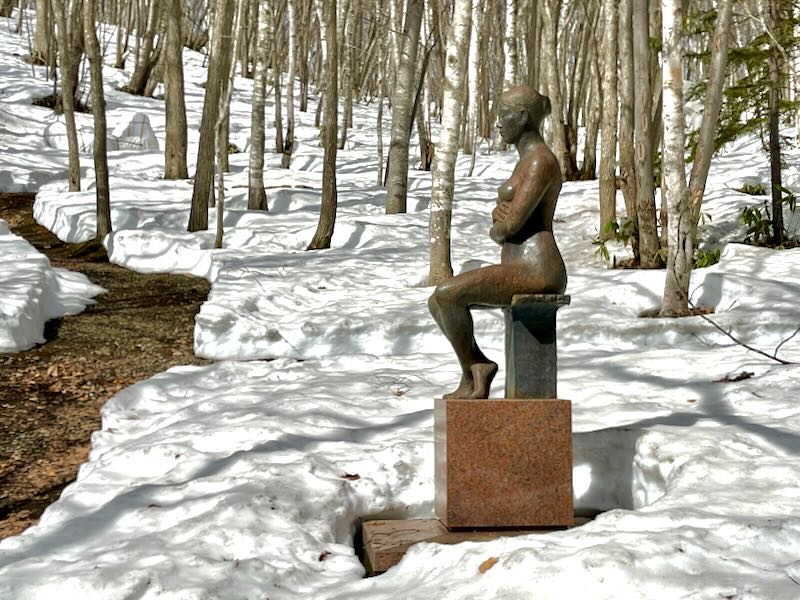
About Santorini Dave